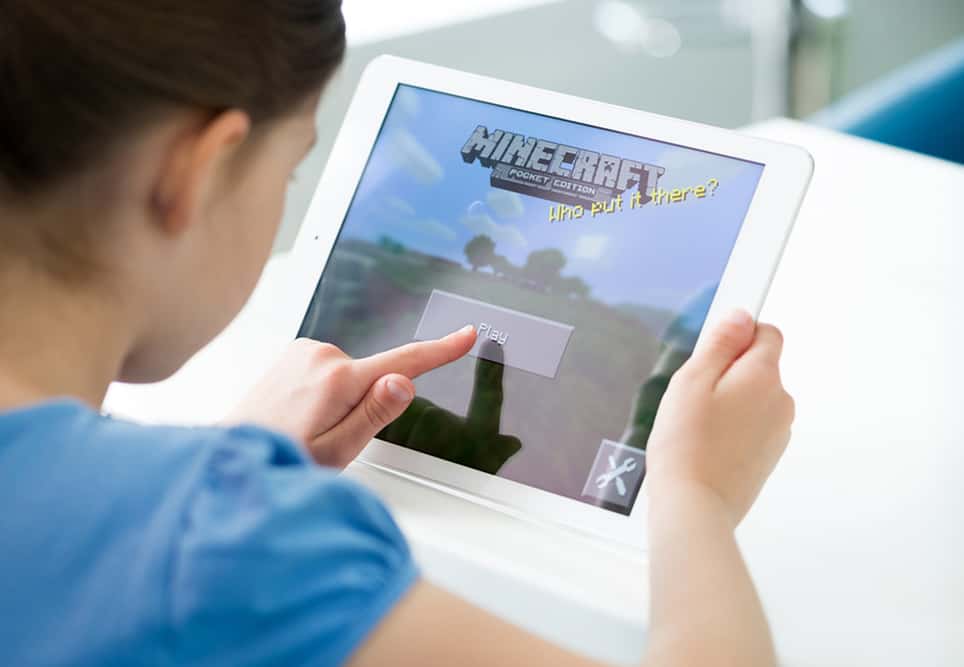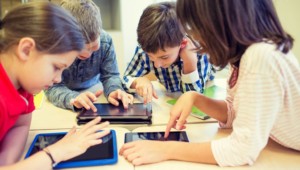Game Based Learning: Serious Educational Play

There is a common misperception that game based learning is about what has been labeled as “edutainment” or “chocolate-covered broccoli.” There is a fallacy underlying these sorts of games that goes like this:
- Students like games
- Games have levels and mechanics and points
- If we add these things to learning content, students will like the content
Not so much. In edutainment games, the game mechanics are completely divorced from the learning goals. For instance, the game might ask you to pop bubbles to demonstrate your knowledge of addition facts – what the student wants to get good at are the mechanics, bubble popping, but what the game wants the student to learn is math. This disconnect makes the game inauthentic and a veneer of game mechanics over a worksheet-like process doesn’t fool students for a moment.
Instead, real game based learning has learning as a side effect of achieving the game’s main objective and gaining skill at the actual game mechanics.
There are other forms of game based learning as well. For example, there are numerous lessons to be learned as a side effect of playing commercial games that were never intended to be educational. Also, there is tremendous learning to be gained through the systemic design of games.
I had the opportunity to speak with a number of academic experts and practitioners of game based learning in a series of interviews that are summarized below. For the full discussions, I recommend this playlist of the interview series.
Interview with Sherry Jones, Game Design and Psychology Subject Matter Expert and Instructor, Rocky Mountain College of Art and Design
What is game based learning?
Game Based Learning (GBL) is the use of games for learning. This may involve using games that have specific learning outcomes and objectives, designing games, or learning from commercial games that were not originally designed for that purpose.
Why is it important to have GBL in the classroom?
What makes games fun, ultimately, is the learning that happens in them. Learning is more than rote memorization, it is the development of skills and understanding. Games are particularly suited for engaging students in skill development or new contexts for an extended period of time
How does GBL support intrinsic motivation and ownership?
High quality GBL draws us into contexts that feel highly relevant and give us a great deal of autonomy within that context. As we play the game, we develop skills as a side effect of the game play, not as the end goal.
What does GBL look like in practice?
There are many ways that GBL can be used for learning. A few examples from Jones’ own work include:
- In literature, games can serve as texts to be deconstructed and analyzed in much the same way as books, but with the advantage that they are truly interactive, leading to more active learning.
- Games can be analyzed to understand how writing depends on your audience.
- Games can be used to understand rhetorical appeal in a philosophy class.
- A game called Atum was used to explore the concept of eternal recurrence and the concept of free will in a philosophy course.
Additional examples include:
- History teachers creating counterfactual games – alternative histories
- Math teachers using games to explore probability
- Social studies teachers using foreign games to compare and contrast dominant culture versus minority culture
- Archeology students trying to preserve history by recreating historical artifacts inside games
- Physics teachers using games such as angry bird to compare game physics to actual physics
Interview with Chris Luchs, Associate Dean, CCC Online and Kae Novak, Instructional Designer, Front Range Community College
What are alternate reality games?
Alternate Reality Games fall under the category of Pervasive Games, games that are not in a simulation but instead take you out into the real world. They have a story line to them that is set in the real world. Students play as themselves but there is another component added to it such as being part of a chosen group. It forces students to play the game as though it matters, as though it is real.
In an art history class you can send students to an art museum, in a business class you can send them to observe real businesses.
Why is ARG important in the classroom?
Games create an epistemic frame where pieces of the game relate directly to the skills you want the students to master. In business, this may mean using a “real” if simplified economy such as that in World of Warcraft to help students understand supply and demand.
When playing these games, students are already acting as professionals – you can listen to them in the classroom and hear them using the right terms and contexts for their work in a way that is similar to listening to real professionals talking about their work or their day.
How does ARG support intrinsic motivation?
Students learn things that have meaning for them and that support real workplace needs, allows them to work at their own pace, and lets them take control of the process such as by creating their own teams and just moving ahead.
What does it look like in the classroom?
Novak implemented an ARG where biology students were told they were part of a technology grant testing a new way of learning. The students were told they would be looking at cold cases of possible global origins of diseases. Luchs created an ARG where students behaved as consultants for economic development. They studied local restaurants, coming back with a deeper understanding of inventory, cash flow, hiring, and understanding how each activity in a business created a cost or revenue.
Interview with Trish Cloud, Grand Oak Elementary, Charlotte-Mecklenburg School System, NC
How are you using Minecraft for learning?
Fourth and Fifth grade teachers have been using it for math, in particular for area and perimeter and arrays. They also use it for fractions as the blocks make great units.
In social studies, the students created colonial Williamsburg and then acted as the governor approving or denying bills from the governor’s mansion.
How does Minecraft support intrinsic motivation?
Kids feel confident in Minecraft. For example, if they may not completely understand the math concept, they still have that sense of confidence in at least one portion of the assignment, making the work more accessible to them.
For more check out:
- How Mobile Learning Supports Student Growth and Ownership
- The Maker Movement: What it Looks Like, Mindsets and Motivation
- What it’s like to be a Maker Mom
Stay in-the-know with all things EdTech and innovations in learning by signing up to receive the weekly Smart Update.






0 Comments
Leave a Comment
Your email address will not be published. All fields are required.